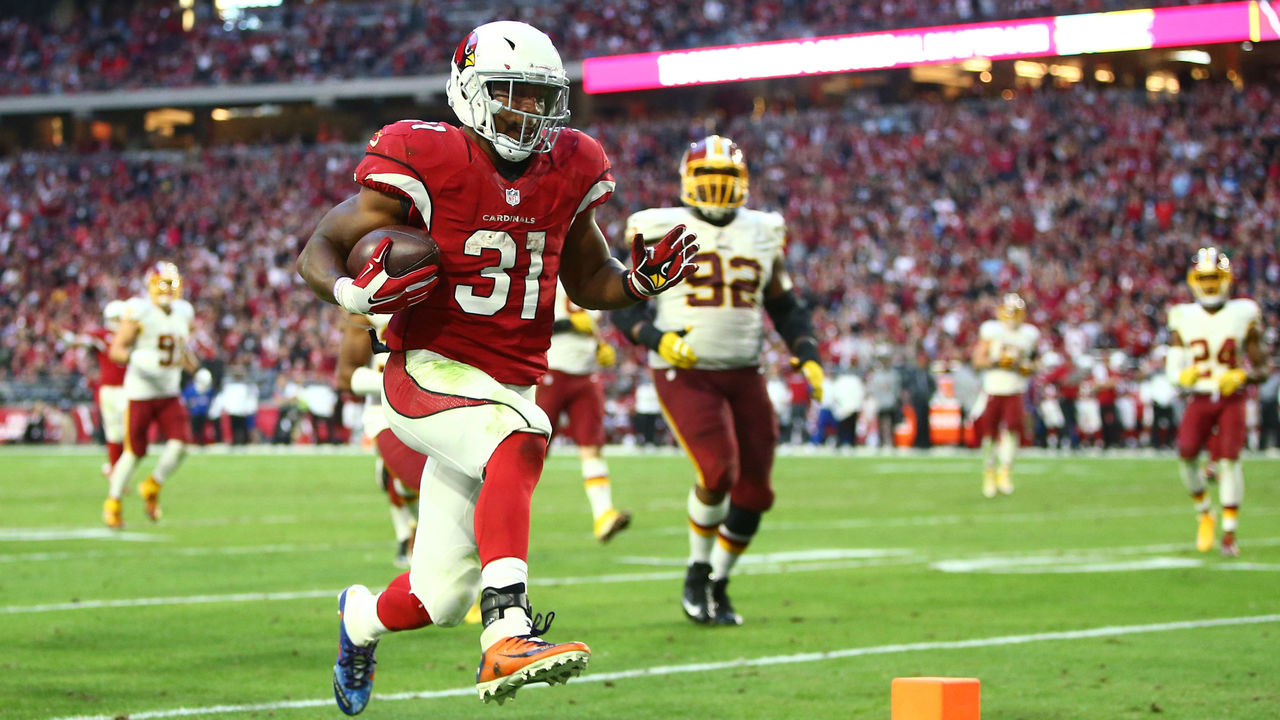Tier-based drafting in MFL10s and how to maximize your roster value
Follow theScore's fantasy feed on Twitter (@theScoreFantasy) for the latest news, features and more. And download Squad Up, theScore's free-to-win-money sports game.
A major key to your MFL10 drafts is remembering that you don't need all your players to be successful or useful for all of their 15 games in the first 16 weeks of the NFL season. What you do need is nearly all of your 20 draft picks to be useful at least one time each.
With this strategy in mind, the player pool at running back and wide receiver can be broken into three tiers; proven starters, temporary starters and future starters. Here's a look at each of the three tiers and how to build a successful MFL10 roster:

Proven Starters
By far the shallowest tier of the player pool, elite running backs and receivers will fill the first several rounds of fantasy drafts. Barring an injury or total team meltdowns (Houston Texans WR DeAndre Hopkins and Jacksonville Jaguars WR Allen Robinson, for example) they're sure to finish the season as top producers at their position.
Even though they'll still have down weeks, they should put forth a start-worthy performance more often than not over the course of the season. These are the players you can rely on to fill at least one of your RB and two WR spots.

Tenuous Starters
This is the biggest separation between an MFL10 and a standard, season-long fantasy league. No one wants to waste a mid-round selection on a player likely to start for only the first few weeks of a season-long league.
In MFL10s, however, this is perfectly fine. You just need some start-worthy weeks from them. Have them carry you as far as possible into the season before they lose their job. You'll be able to draft options for later in the season deeper in your draft

Future Starters
As in season-long drafts - particularly keeper leagues - owners want to load up on rookies and potential stars with their final picks. Once your bare minimum roster requirements are fulfilled in an MFL10, it's time to take some risks, making this the deepest but most volatile tier.
Any running back or wide receiver beginning the season either second or third on their team's depth chart holds value as long as they have the skill to become a starter, or the players ahead of them on the depth chart have a loose hold on the job.

Quarterbacks
It's more beneficial to wait on drafting quarterbacks in MFL10s than in any other fantasy format. They key to waiting is to carefully match the schedules of two or even three QBs based on matchups, ensuring at least one will have a favorable game.
Team defense performance can fluctuate greatly from year to year, but focus on those which failed to address weaknesses in the offseason. Strength of schedule can be a major key when looking for value at the position, as can strength of division. Even the most fringe QBs can have several start-worthy weeks if their schedule allows for it.
It's more likely you'll have five quality performances from each of three late-round quarterbacks over the course of a season, then you are to have an early-round quarterback excel week-in and week-out.
HEADLINES
- The 1990 playoff plot twist that went from disappointment to destiny
- Pelicans dump Kings, book 1st-round series with Thunder
- Montgomery wins in debut, D-Backs hammer Giants 17-1
- Yankees' Schmidt: 'Sign the dotted line with however much' Soto wants
- Astros' Verlander allows 2 runs over 6 innings in season debut